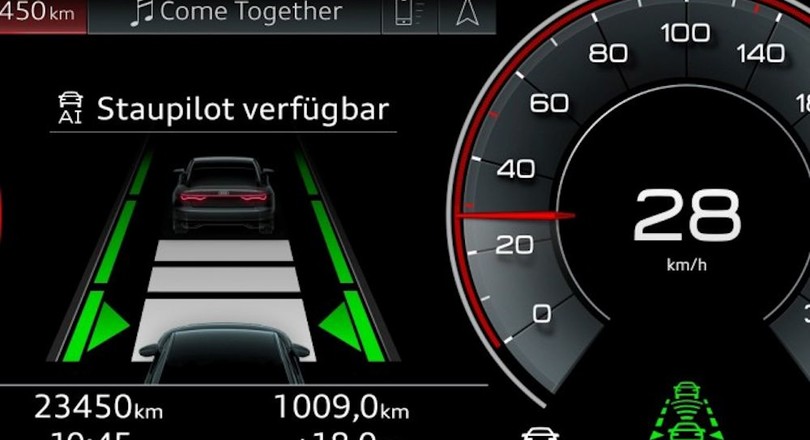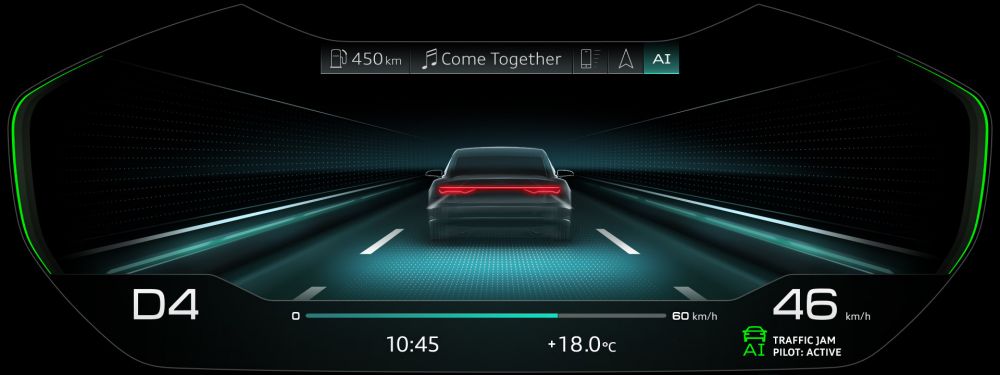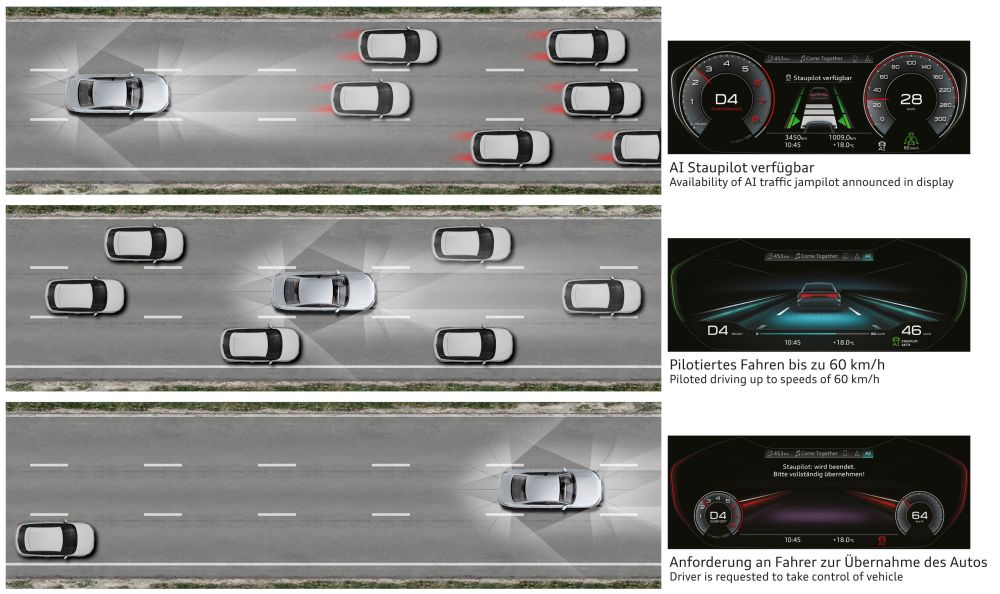
Although autonomous driving may become part of road traffic safety regulations, its introduction still raises a number of issues. This has been clearly demonstrated by the use of the Audi traffic jam pilot.
The latest Audi 8 is fitted with an automatic traffic jam pilot: in case of congestion with stationary or slow-moving vehicles, the traffic jam pilot can take over the entire acceleration and braking process up to a certain maximum speed. That certainly sounds useful, but even this relatively simple piloting action really is quite complicated, according to a report on the traffic jam pilot on the German Golem.de website.
Ever since Audi announced the introduction of its traffic jam pilot last year, various questions have been raised by the authorities. These must be answered before the traffic jam pilot can actually be approved for road use. The authorities need to know for certain that the autonomous function poses no risk to road safety. A crucial aspect is that the driver no longer needs to pay attention to the traffic jam, and can conduct other activities in the meantime.
Light and audio signals
Take the interaction between the vehicle and the driver, for example. How much time does the driver have to retake control of the steering process, if necessary? There has been mention of 4 seconds, while a recent Korean study advocates 8 seconds. Audi itself is thinking in terms of 10 seconds. Audi attracts the attention of the driver using light and audio signals or by having the car brake briefly and abruptly.

How can the car check whether the driver is still awake? How does the car react if the driver fails to do so? Audi has included a camera in the vehicle to monitor whether the driver is not closing his eyes too long. But at the same time, the driver is free to do other things such as sending an app, possibly with his head bent forwards, while in a traffic jam. The camera fails to distinguish between a napping driver and an apping driver.
Considerably limited
In order not to complicate matters further, Audi has considerably limited the package of tasks assigned to the traffic jam pilot. The car must stay in lane, so no lane changing is allowed. The vehicle must be able to recognise its lane, even when there are no markings on the road or when they are poorly visible, as in the case of the yellow markings used in diversions. One of the remaining questions is whether the use of the system should depend on the weather conditions, such as snow or hail. Audi has also limited the maximum speed to 60 km/h, above which the driver must retake control.

The software has been programmed so the Audi need not pay special attention to emergency services or the police. In the left lane, the vehicle will always keep to the left, and to the right in the central and right-hand lanes. It must also be able to react effectively to cars joining the traffic jam, or when vehicles must merge in the event of a road narrowing. The Audi is fitted with radar for that purpose, looking sideways, forwards and at angles from the corners.
Minimum distance?
Another question under discussion by the international advisory bodies (such as the United Nations Economic Commission for Europe) responsible for road safety regulations, is whether the minimum distance to the car in front must be regulated. Moreover, the French government wants the police to always be able to determine whether or not the car was piloted by the traffic jam assistance system.
All these (as yet unanswered) questions are proof that autonomous driving is by no means simple. All kinds of new questions arise which cannot always be overcome technically. Confirmation of whether or not the traffic jam pilot is allowed is now expected to be forthcoming some time next year.
If you found this article interesting, subscribe for free to our weekly newsletter!
Nieuwsbrief
Vond je dit een interessant artikel, abonneer je dan gratis op onze wekelijkse nieuwsbrief.

